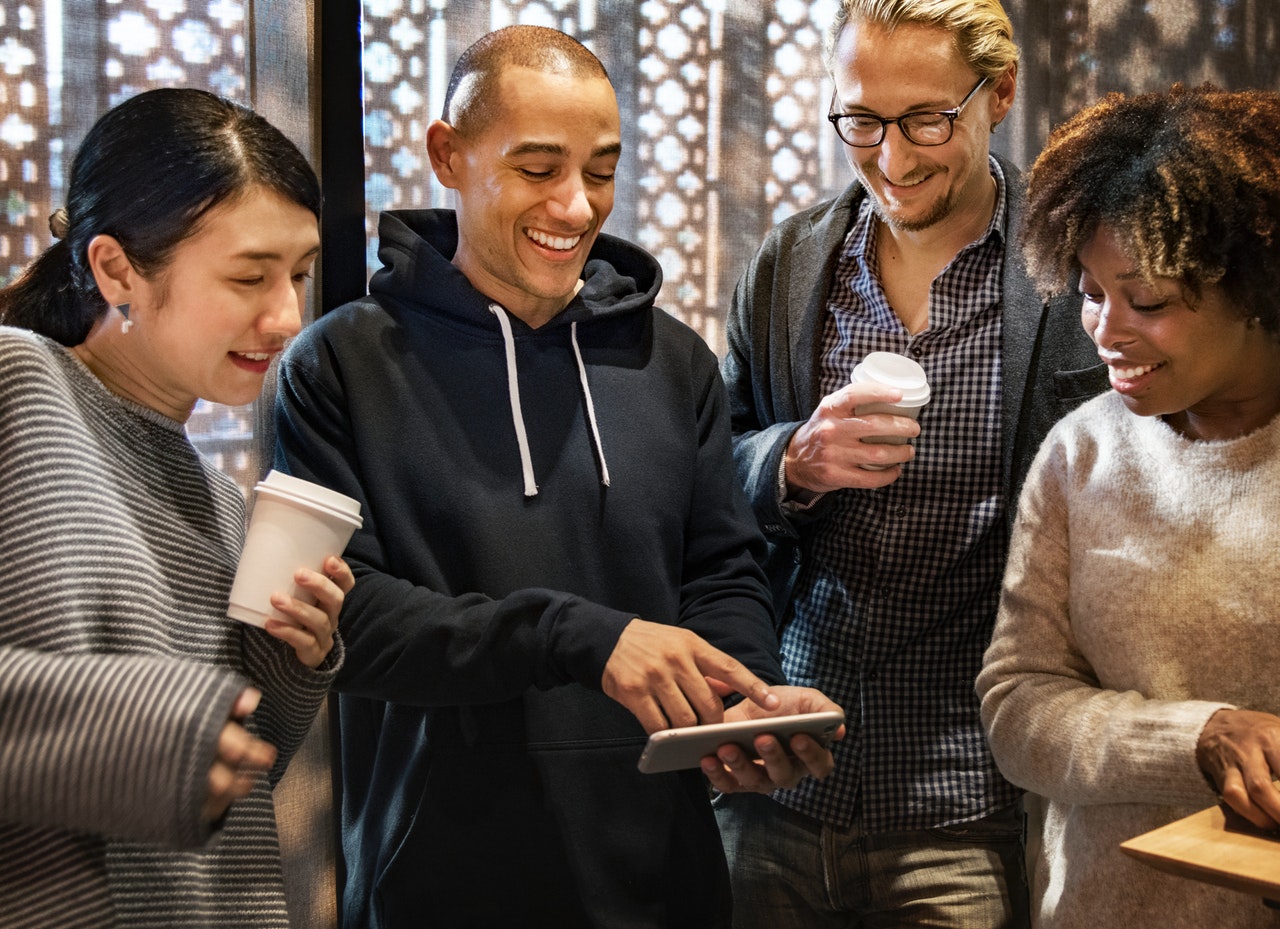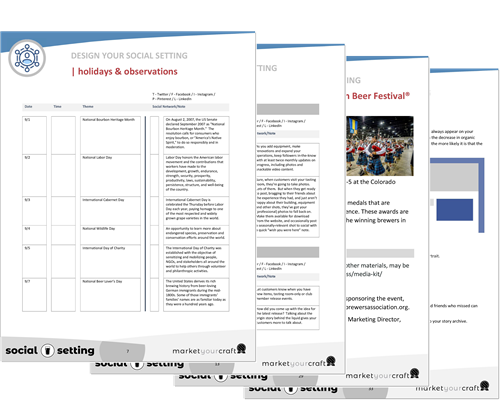Last time we dove into festival economics for craft beverage brands, discussing consumer and brand expectations in order to measure ROI. Because the point of participating in any festival is to expose your craft brand to new audiences in relevant, high-performing ways. While the same can be said of all marketing efforts and spend, today we’re going to talk about an often overlooked and undervalued venue for consumer discovery: making it to the Google first page. And we’ll identify the tools needed to increase your position for free. First, let’s see where you rank – does your craft brand show up under:
 | CRAFT BEVERAGE IN YOUR STATE: Google it > CRAFT BEVERAGE IN YOUR CITY: Google it > YOUR BRAND OVERALL: Google it > |
Don’t assume consumers will only search for your brand name: they may just be looking for craft beverage nearby. Now we know where you stand in Google, let’s discuss why it matters.
- summary
- the basics – digital signposts
- getting crafty – why your story matters
- behind-the-curtain – tools for improving ranking
- October 2019 content calendar
summary
 In order to be discovered by a new craft beverage consumer today, it’s vital for your brand to prioritize 1) a mobile-friendly website, 2) search engine ranking and 3) social media presence. The three work in tandem to provide digital signposts to your facility in ways that traditional media (radio, broadcast, print, POS) fall short on cost-efficiency and engagement. Having a deliberate, succinct brand story not only helps promote your brand to the right audiences (push), but helps consumers connect at a deeper level once they arrive (pull). And while search engines often change the way they rank businesses to avoid gaming the system, there are proven tools available to help improve a craft beverage brand’s visibility. The goal is Google first page results.
In order to be discovered by a new craft beverage consumer today, it’s vital for your brand to prioritize 1) a mobile-friendly website, 2) search engine ranking and 3) social media presence. The three work in tandem to provide digital signposts to your facility in ways that traditional media (radio, broadcast, print, POS) fall short on cost-efficiency and engagement. Having a deliberate, succinct brand story not only helps promote your brand to the right audiences (push), but helps consumers connect at a deeper level once they arrive (pull). And while search engines often change the way they rank businesses to avoid gaming the system, there are proven tools available to help improve a craft beverage brand’s visibility. The goal is Google first page results.
the basics – digital signposts
Have you ever wondered what you would do without your mobile mapping program? The fact that we all have immediate access to nearly perfect routing information for any mapped location on Earth is mind-blowing. It was one of the earliest applications available on the WWW, with Mapquest and other players battling for dominance in the mid-nineties. But this isn’t a history lesson on the early days of the Internet: we’re most interested in how it started a macro trend on reaching the [literal and figurative] destination as quickly as possible.
 If you use Google Maps, for example, ask yourself who you trust more to get you to your destination safely: Google or street signs? Most would say they listen to Google directions and then use street signs to reinforce left- and right-hand turns, merges and exits. We want to get to where we’re going using the shortest route possible; very rarely do we have the time or interest in taking the long way just to see the sights.
If you use Google Maps, for example, ask yourself who you trust more to get you to your destination safely: Google or street signs? Most would say they listen to Google directions and then use street signs to reinforce left- and right-hand turns, merges and exits. We want to get to where we’re going using the shortest route possible; very rarely do we have the time or interest in taking the long way just to see the sights.
As a craft beverage business, you depend on a certain amount of local foot traffic. But you hope to eventually become a destination for new drinkers…at a rate at least equal to or greater than current customer loss. How will consumers who have never heard of you find your brand? Word of mouth? Of course. On-shelf at retail? Sure. But your audience is limited. Digital expands your reach well beyond the immediate geography, giving consumers tools to first find you, then compare you to other choices before committing. A mobile-friendly website, higher search engine ranking and engaging social media help point visitors directly to your business, avoiding distractions and slowdowns.
getting crafty – why your story matters
 We’ve discussed designing your brand story and the value today’s craft beverage consumer places on company mission, vision and values. Google and other search engines assign similar value to company transparency and content in order to organize vast amounts of data and deliver it on-demand. They win when the consumer discovers gold in the search results. When you searched for your brand/city, you may have questioned your ranking and why competitors placed higher or lower. Simply put, those who win at the search engine game (without paying for it) produce highly-relevant content regularly and share it in a snackable format on their mobile-friendly website.
We’ve discussed designing your brand story and the value today’s craft beverage consumer places on company mission, vision and values. Google and other search engines assign similar value to company transparency and content in order to organize vast amounts of data and deliver it on-demand. They win when the consumer discovers gold in the search results. When you searched for your brand/city, you may have questioned your ranking and why competitors placed higher or lower. Simply put, those who win at the search engine game (without paying for it) produce highly-relevant content regularly and share it in a snackable format on their mobile-friendly website.
Let’s break this down into actionable tactics for your craft beverage business to achieve Google first page ranking:
- Who are you: beyond the origin story, what are the company mission, vision and business? How are you positioned in the market? And what’s the narrative you tell consumers?
- Establish a personality: craft beverage brands often mirror the owners/team. Are you funny or serious? Premium or approachable? Arrogant or reserved? Your voice is just as important as the message.
- Design for mobile: assume consumers will find you via mobile before desktop. Use modern page layouts, navigation and tools that are familiar to the user. Ensure the site displays properly across screens and pages load quickly.
- Tell the story: create content – lots of it – even if it’s not perfect! Pages, blog posts and video all increase your site’s stickiness to consumers. Which in turn helps search engine rankings. Bring relevant content forward in the experience, don’t hide it under layers of navigation.
This exercise not only guides your mobile and search engine strategies, but other aspects of your business as well. Think of it as a “True North” on how you engage your consumers and customers at every touchpoint, from digital to tasting room and everything in-between. While your social media accounts don’t directly influence your rank on search engines, social engagement helps drive traffic to longer-form content and video on your website. And a highly-trafficked website with a volume of relevant content will necessarily rank higher than the opposite.
behind-the-curtain – tools for improving ranking
If you’re looking to quickly jump to the top of Google first page search results, your brand can always target keywords, geographies or user profiles and pay per view, click or conversion. Buying advertising in the search networks is very approachable, and can be managed for the most part automatically according to goals and budgets you establish. However, if you’re interested in the longer-game of establishing relevance and ranking more organically, it’s important to look at the coding of your website in addition to the content displayed for your visitors.
 Meta Tags are part of the HTML code that produces the visual interface of your website to visitors. They are hidden to visitors – they only appear when a visitor views the source behind a page. But a search engine looks for this code in order to help identify what the page is about, how it should display and relevant contact information for the site’s owner. These are all elements to help establish content credibility so that engines can with confidence display data collected prominently in the results, including Google first page. Without meta data, it’s more difficult for search engines to categorize the site’s content, which will necessarily be reflected in a lower ranking, if at all.
Meta Tags are part of the HTML code that produces the visual interface of your website to visitors. They are hidden to visitors – they only appear when a visitor views the source behind a page. But a search engine looks for this code in order to help identify what the page is about, how it should display and relevant contact information for the site’s owner. These are all elements to help establish content credibility so that engines can with confidence display data collected prominently in the results, including Google first page. Without meta data, it’s more difficult for search engines to categorize the site’s content, which will necessarily be reflected in a lower ranking, if at all.
Best approach to getting this right is to involve the team member or agency developing the website early and often in discussions. Ensure they understand the goals and objectives, not only for the website but for your larger search engine strategy. Then coordinate re/coding of the website to align mobile experience, user interface and meta tag elements with content that’s being delivered. For sites built on a content management platform, search engine optimization (SEO) tools are often built-in or readily available for plugin:
- WordPress – Yoast SEO
- Squarespace – automatic SEO feature
- Wix – SEO Wizard
- Advanced Web Ranking Tips article
Over time, your site will get more traffic from visitors who are highly-engaged with relevant content. THAT’s what search engines like to see, and what will help land you on Google first page results!
October 2019 content calendar
 Your customers require more engagement from social, but who has the time or the creativity to keep up? Ditch the whiteboard and start the month of October with more than 60 attention-grabbing ideas to help design a content calendar that delivers traffic, clicks and sales. Available for purchase from Market Your Craft, our Social Setting Calendar gives you confidence you’re getting the most out of social each month. In it you’ll find timely and topical talking points; lesser-known craft holidays worth messaging; and recos on ways to share your brand story, culture and energy with followers and fans.
Your customers require more engagement from social, but who has the time or the creativity to keep up? Ditch the whiteboard and start the month of October with more than 60 attention-grabbing ideas to help design a content calendar that delivers traffic, clicks and sales. Available for purchase from Market Your Craft, our Social Setting Calendar gives you confidence you’re getting the most out of social each month. In it you’ll find timely and topical talking points; lesser-known craft holidays worth messaging; and recos on ways to share your brand story, culture and energy with followers and fans.
October, 2019 | 1.8 MB, 38 pages – Available for purchase and immediate download >
MailChimp archive:
https://mailchi.mp/8922ace974a2/191001_googlefirstpage?e=a83dcf3085
Download:
https://app.box.com/s/tijq6bioww4pdg3psufwjcykihkfrnp1